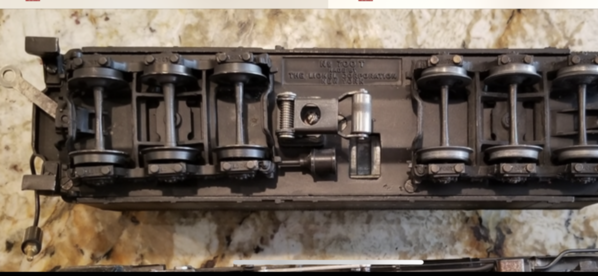Hello everyone, great site for lots of info. I just bought a Lionel 700e from an online auction house (Not Ebay) and paid $1905.00 ($2190.75 with premium). The is a very, very good price, BUT the engine casting is warped. The cow catcher rests right on the third rail and the rear of the cab is also resting on the rear trailing truck. I'm not sure if it's the frame that is bowed (warped) or the boiler. I don't want to take apart and find out why as I'm afraid I might not be able to align the frame/boilers holes to screw back on. The tender is in fantastic shape and whistle is strong. The engine will run (with jumper wires) and cycles forward-neutral-reverse just fine. Is there a way to fix the frame or boiler which ever is warped?
I saw from this site a video from Bryan Hager on the maintenance/repair of 700e Hudson's, but I cannot find any on the internet. Amazon has a "preview" but that is it. Those video's are not longer available from Amazon.
The engine appears to have a new boiler front and side rod crank on engineer side (not sure of the correct name) and frame suggests 1939/40 with oil port in axle, but the cab window frames seem thin, indicating early 1937/39. I wonder if the frame was swapped out at some point. And there is no serial number, anywhere. Thanks!




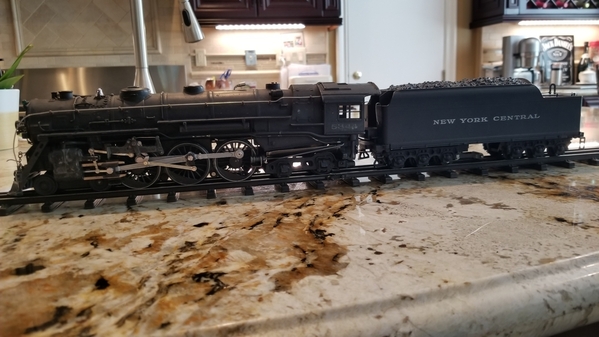
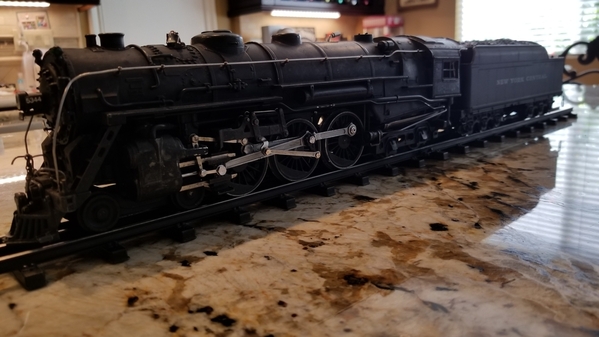
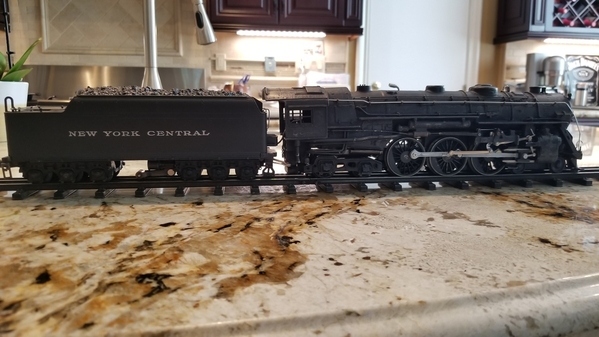

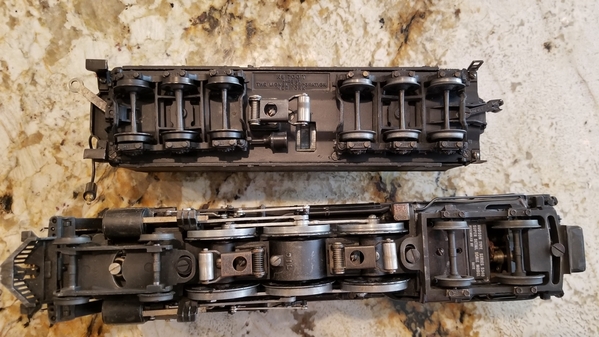



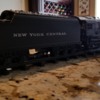

![20220802_170320[1] 20220802_170320[1]](https://ogrforum.ogaugerr.com/sendTempFile/fileUploadProcessOid/1296703/fileUsageType/ATTACHMENT/uniqueOid/163461606020390804/imageType/MEDIUM/inlineImage/true/20220802_170320%5B1%5D.jpg)
